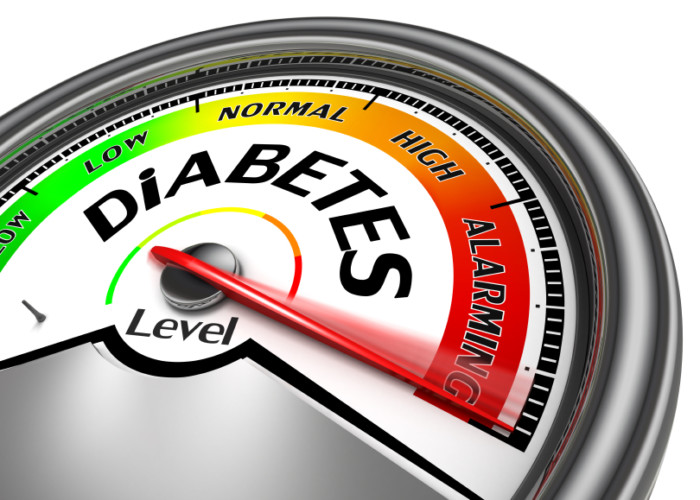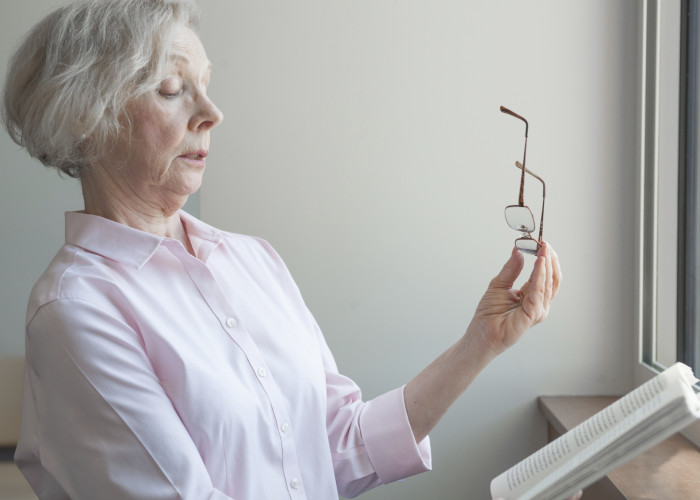Vision Issues
Try These Fun Activities for Someone With Alzheimer’s and Vision Problems
If you’re struggling to come up with engaging activities for someone with Alzheimer’s and vision problems, give these ideas a try!
Finding meaningful, engaging ways to spend each day for a senior loved one with Alzheimer’s can be a challenge. Add in vision impairment, and it might seem overwhelming. Even so, it’s vitally important to ensure every day holds opportunities for purpose and joy – minimizing the level of agitation, frustration, and other difficult emotions and behaviors in dementia. If you’re coming up blank when trying to come up with these kinds of activities for someone with Alzheimer’s and vision problems, we have some suggestions you can try.
How Alzheimer’s Impacts Vision
Learn how Alzheimer’s impacts vision and what steps to take to ensure safety.
The intricate steps needed to make it possible for us to see are mind-boggling. Within the blink of an eye, our brains have the capability to take transmitted details from the environment around us, translate that information based upon input from other senses, thoughts, and experiences, and then build an understanding of that information to help make us conscious of what we are seeing.
It’s unsurprising that Alzheimer’s impacts vision, and therefore people with Alzheimer’s can encounter misperceptions and visual deficits, particularly in the aspects of:
Depth and/or color perception
Contrast
Motion recognition
Peripheral vision
What’s more, individuals who have Alzheimer’s can frequently encounter an altered sense of reality in the form of illusions. For instance, someone with Alzheimer’s disease could see a shadow on the ground, and mistake … Read More »
The Diabetes Symptoms You May Not Be Aware Of
Learn which symptoms to routinely check for when managing diabetes.
Let’s get serious and take a hard look at the statistics: as many as 29 million Americans are currently diagnosed with diabetes—over 9 percent of the entire population.
Diabetes is more rampant in the United States than ever before, and providing care for a loved one impacted by diabetes symptoms is an everyday event. While each person’s experience with the disease is unique, there are certain diabetes symptoms that can crop up with little to no warning, requiring that diabetics and their care providers alike be on the lookout each and every day.
Following are just a few important examples from the American Diabetes Association of diabetes symptoms to watch for on a routine basis:
Overwhelming fatigue
Blurred vision
Cuts and/or bruises that are slow to heal
Reduced weight – even when … Read More »
Use Colors to Enhance Vision
Do you know someone dealing with vision loss? Being a caregiver to someone losing his or her vision can leave you feelings helpless, but it doesn’t have to. Many people don’t realize one of the easiest ways to help someone with vision loss is to utilize contrasting colors. Rearranging parts of a home utilizing colors more effectively can make it safer and allow for greater independence.
Here are some simple rules to remember regarding color and contrast for those with low vision:
Generally, solid, bright colors such as red, orange, and yellow are easiest to see because of their ability to reflect life.
Place light colored objects against darker backgrounds. For example, a white sheet of paper is more visible against a brown desktop.
Place dark objects against lighter backgrounds. A dark chair will stand out better against cream-colored walls.
Distinguishing colors within each of … Read More »
Technology Help for Vision Loss
People often think ‘vision loss’ is synonymous with ‘loss of independence’. When vision starts to decline, simple activities like driving and grocery shopping feel further out of reach. It’s true that a loss in vision can make it harder to go through day-to-day activities, but today there are many different technologies available specifically designed to make vision loss manageable.
Here are a few examples of innovative products to enhance the independence of the visually impaired:
Talking Color Identifier with Light Probe
This small device detects about 100 colors, which can be very helpful when dressing independently. It speaks clearly at three volumes and has an earphone jack.
Hi-Mark™ Tactile Pen
This pen produces a three-dimensional plastic liquid that makes raised lines, dots and shapes to identify clothing, canned goods, frozen foods, and mark the settings on appliances.
VOXCOM III Voice Labeling System
Record messages by pressing a … Read More »
Caregivers: Recognize the Signs of Increasing Vision Loss
Vision loss can be a scary experience. Suddenly, the world gets smaller, and you can’t do the simple things you once could. While many eye problems are treatable and often maintainable, there comes a time when you simply need help to do the day to day activities safely. However, it can be hard to admit help is needed. You may worry that others will see you differently, that you will lose your privacy, or that you will lose overall independence. These types of fears may keep seniors from admitting the vision problems they are experiencing.
This is why it is important to be able to recognize small changes in behavior and appearance that signal a need for a visit to the eye doctor or a little extra help. If you notice certain behaviors or coping techniques, you may be able to … Read More »
Small Adjustments Create Big Change
Our vision allows us to move through life with an ease we sometimes take for granted. It allows us to see the wonders of the world, the smiles on our loved ones’ faces, and to move through our day to day activities without a second thought. Vision keeps us independent and self-sufficient, and the idea of losing that ability can be unnerving and saddening.
Because of this, it is important to approach someone experiencing vision loss with care and consideration. Going through the home and making small adjustments can make a senior’s life much easier and allow for continued independence. A general rule of thumb when making home modifications for seniors with impaired vision is to pay special attention to the basic concepts of lighting, color and contrast. Try making a few of these small adjustments:
Lighting
Try to maintain continuous lighting levels … Read More »














